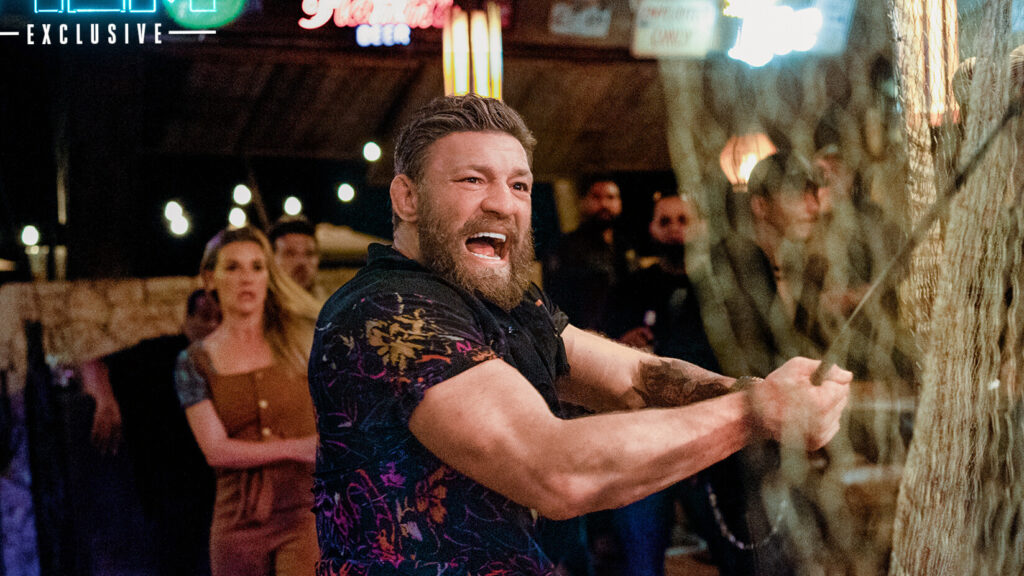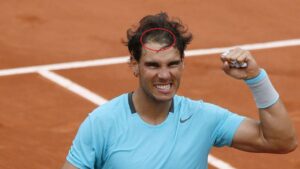Have you ever been curious about Conor McGregor’s hairline? The legendary UFC fighter is renowned for his fierce battle in the ring and unmistakable style. Join me as I delve into a hair transplant analysis of the notorious MMA. There’s a lot to learn from his hair journey.
In 2013, at the age of 25, Conor had a central hairline position that was appropriate for his face. He had mild frontotemporal recession, which you could see in the corners of his hairline. There was also a scar on the left posterior temple.
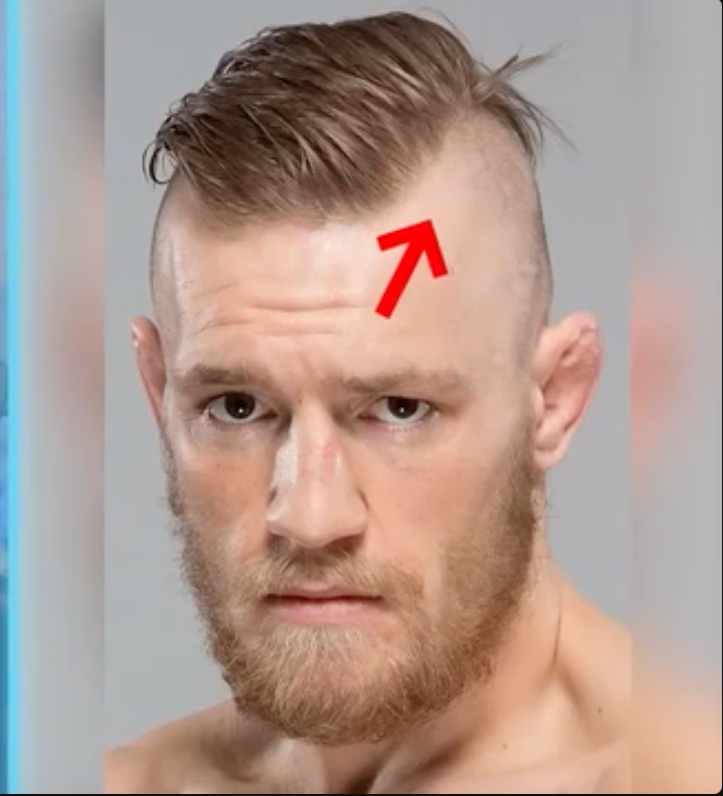
Conor McGregor’s Hairline in 2014
In 2014, at the age of 26, I observed some temporal thinning. Therefore, there is a recession now, not just in the corners but also in the temple area. But if you looked closely at his hairline, there was an irregularity to it and a fineness that was quite natural. And those were some of the defining characteristics of a natural hairline.
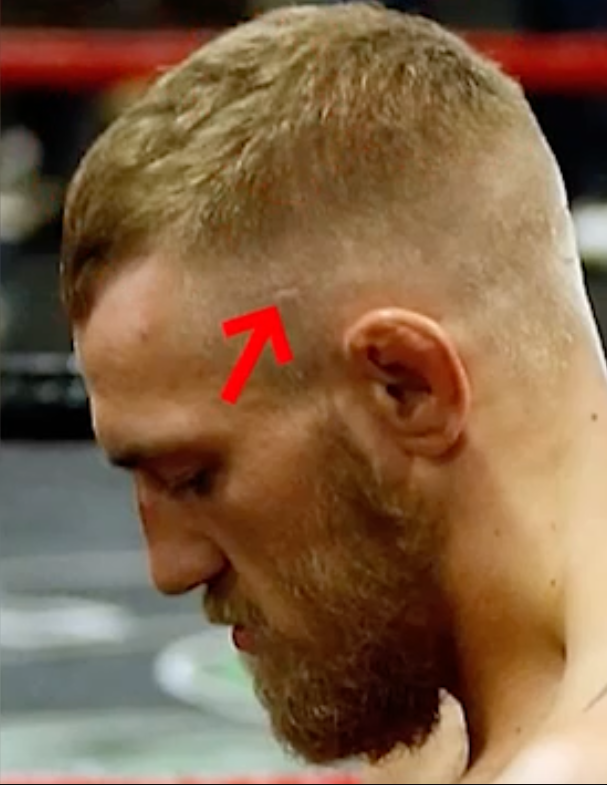
Conor McGregor’s Hair Journey in 2015
In 2015, at 27, right at the frontotemporal corners. Conor was partially masking the recession with the temporoparietal hair coming in from the sides there and combing it forward. However, the central hairline was at a proportionate height relative to the midface and the lower face. You could see here that the midface was vertically the shortest segment of the face. In 2016, at the age of 28, he shaved his head. Now that he had shaved his head, you could see the natural hairline pattern well visualised in this photo.

Micro-regularity to the hair and macro-regularity in that the hairline had this undulating pattern as you followed it from left to right. And if you looked at the directionality of his hair right at the hairline and frontal scalp, there was this standard type of fanning pattern. Therefore, the direction of the hair was anterior or forward-facing. And as you went from left to right, it fanned around. And so when we did the surgery, we tried to recreate that if that was the patient’s baseline pattern. But keep in mind that there were many other variations. Given Conor’s age in these photos, the worst time for male pattern hair loss to accelerate was usually in our mid-to-late 20s or early 30s. That was when hair loss was the most aggressive. During those times, especially, it was important to be on medical therapy for your hair to preserve it and give it the fullest appearance it could have.
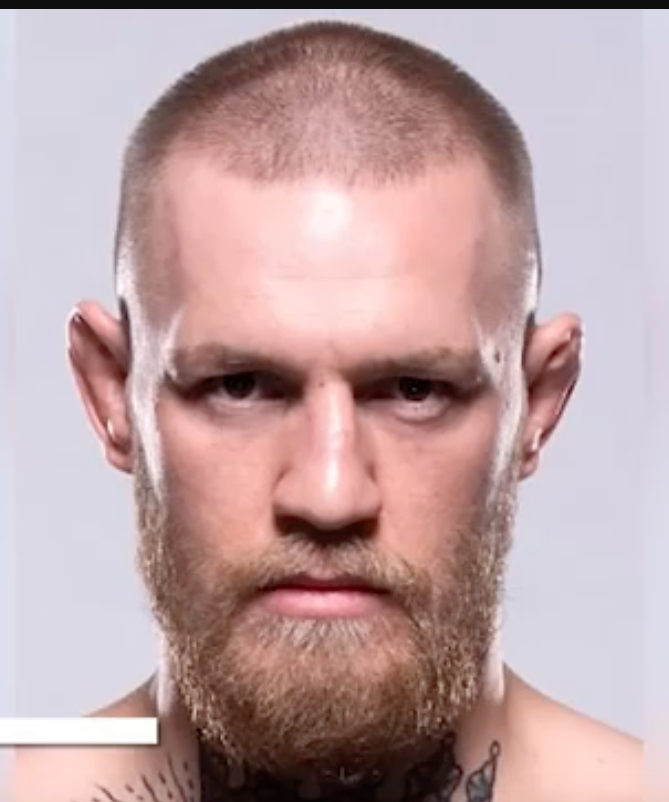
Conor McGregor’s Hair Journey in 2019
Around that time and, of course, in later decades as well. Learn more about prescription hair medication and other things you could do to bolster your hair. In 2019, at the age of 31, I observed that the right side of his hairline was now more receded than the left side. And this was the case for about 90% of men. It was unclear exactly why, but I always observed it in my practice.
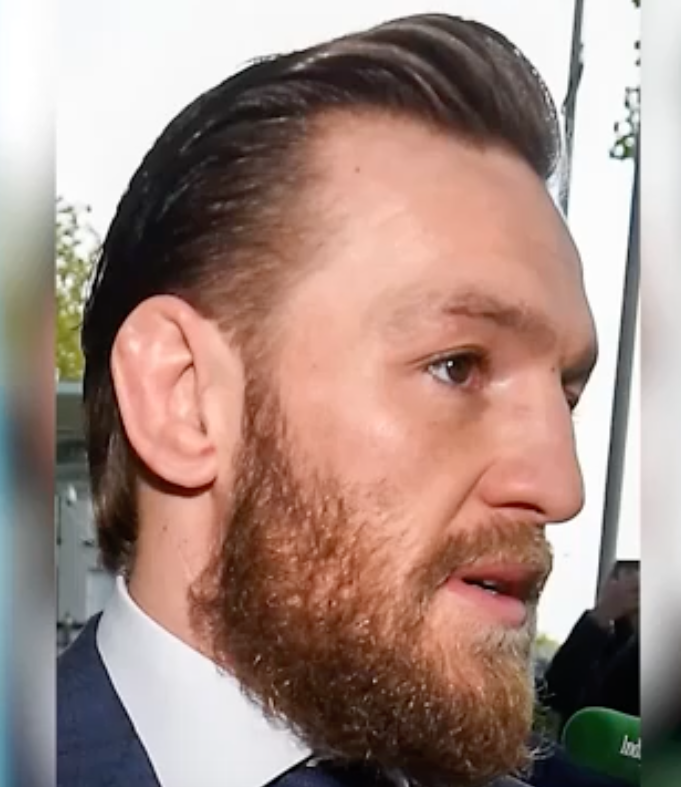
Not only was the right corner more recessed, but for most people, the right side of the forehead was also their wider side, and the side tended to be more curved. And that ultimately impacted how our hair looked. You could also see in this photo that there was a slight thinning at the central hairline. And this was something that happened as we continued to age.
Conor McGregor’s Hairline in 2021
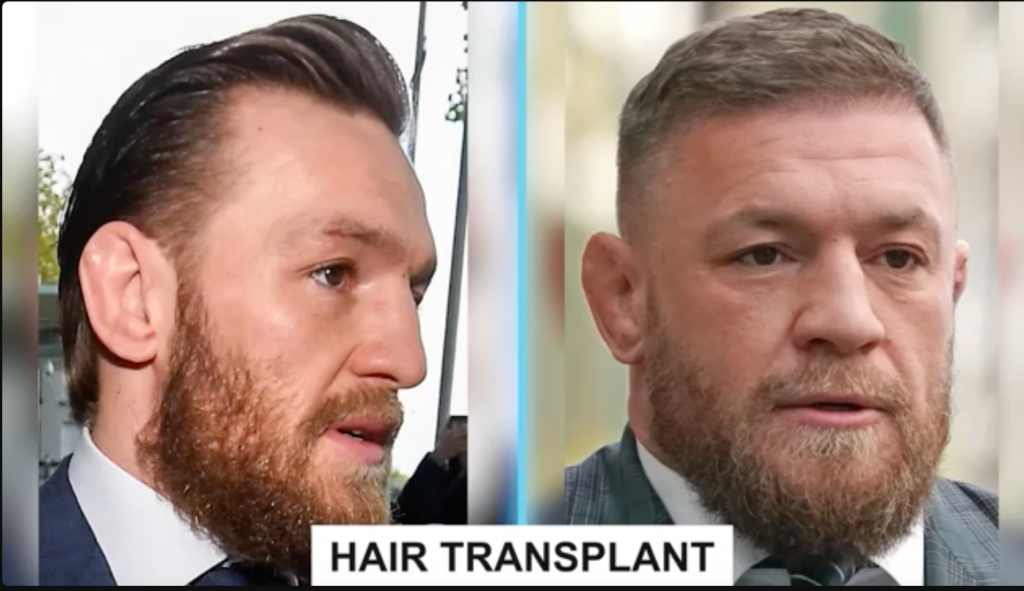
And in 2021, at the age of 33, initially I saw no change when looking at these specific photos. That was, of course, at first glance. But as I looked through 2022, I discovered that it looked like he may have had a hair transplant, most likely around October or November of 2021. In mid-January 2022, we saw some early signs of hair growth at the transplanted hairline. This was about two to three months post-operative when we first saw fresh hair growth. Remember, initially, after a hair transplant, the hair that was transplanted fell out, and then it took a few months for you to start to see new growth. And that growth happened gradually over about a year to a year and a half. And as I looked at photos of the back of his head, I didn’t see any linear scars. That suggested this was probably an FUE-type procedure. We had a video covering the differences between FUE and FUT surgeries. By April 2022, you could see a lower, straighter type of hairline.
Conor McGregor’s Hairline in 2022
And you could also see that the temples appeared more medialized. They had been brought back in. And by about September 2022, his hair had reached its full growth potential. And I estimated that the size of this procedure was about 1,400 to 2,200 FUE grafts. And then I looked at his hair throughout 2023. He was now 35 years old. It didn’t appear that he had had any additional hairwork done.
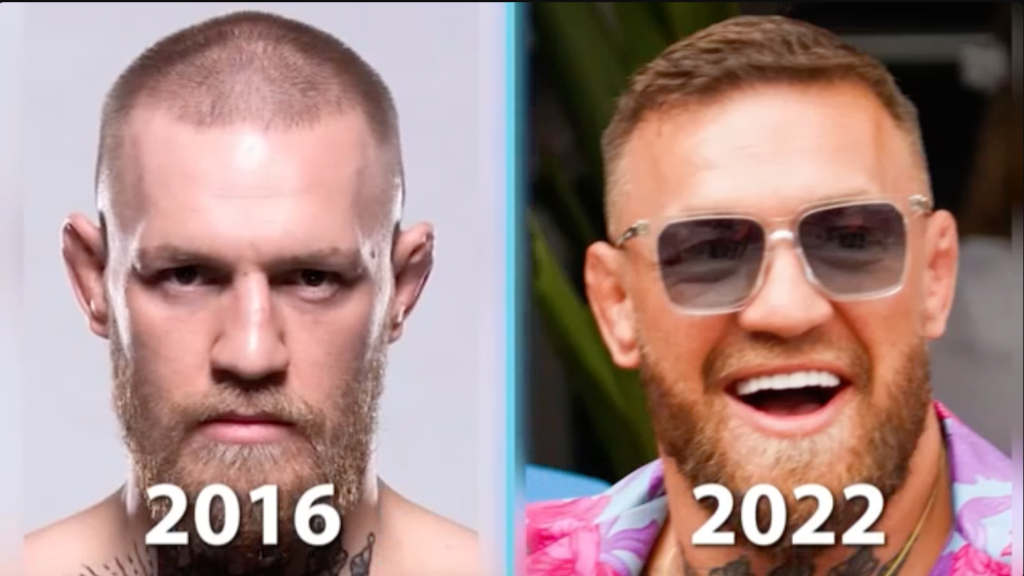
But I did see a weakening of the hairs that were originally transplanted. Therefore, this raised the question: how could this be? He was now two years out from his purported hair transplant, and we saw that the hair looked thinner. Now, I believe there are two main reasons why this may have occurred.
Reasons for Thinning Hair After a Hair Transplant
And the first was because of the FUE technique. Follicular unit extraction is modern-day hair transplant surgery’s most widely used harvesting technique. And while you got to skip the linear scar in the back of your head, one of the problems with it was that you needed to harvest over a broad area on the back and sides of the head to disperse the harvest so one area didn’t look over-harvested or overly thinned out.
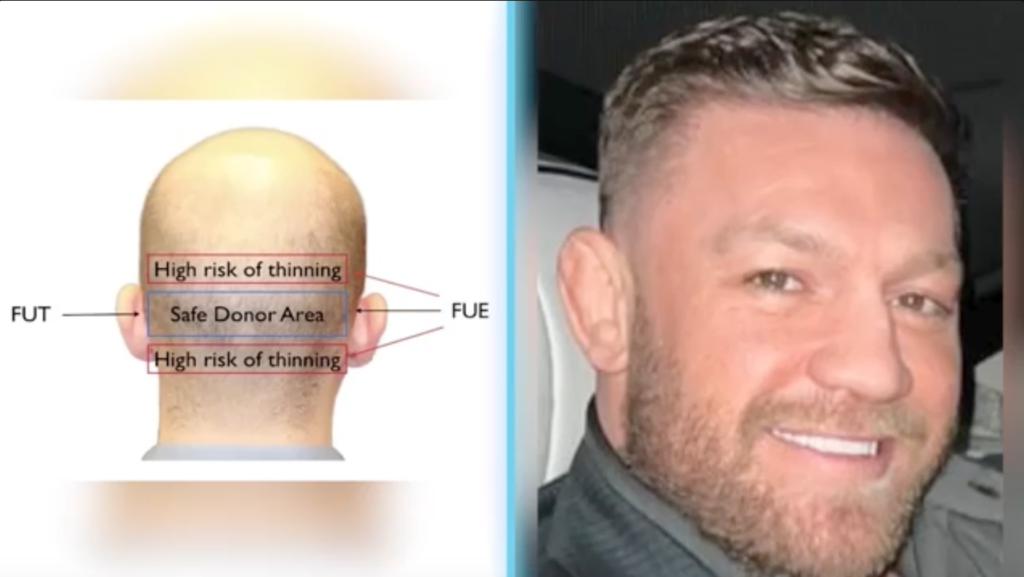
As you did that and broadened your harvesting zone, you were essentially going into areas that were not completely safe regarding DHT sensitivity. So, if you went into areas that were DHT-sensitive, what happened was that you were taking out hairs that were genetically programmed to fall out anyway eventually. And if you took some of those hairs and moved them to a new location, they would eventually fall out because that’s what they did unless you were on some protective medications. If you weren’t on any medical therapy like finasteride, you would eventually lose those hairs that were programmed to fall out from the get-go. And so he may have had a very broad FUE harvest where some of those hairs were DHT-sensitive, or he probably wasn’t on the protective medications that led to that hair transplant falling out. One of the positive attributes of his hair transplant was that it looked like mostly single hair grafts.
Aspects of Conor McGregor’s Hair Transplant
Right at the hairline. As I looked closer, it looked like it wasn’t just at the first few rows where single hair grafts were used but also further back for that entire inch and a half of transplanted hairline. They might have intended to do that, even though in a natural hairline, you only had single hair grafts, usually at the first few rows, and then it built into heavier grafts.
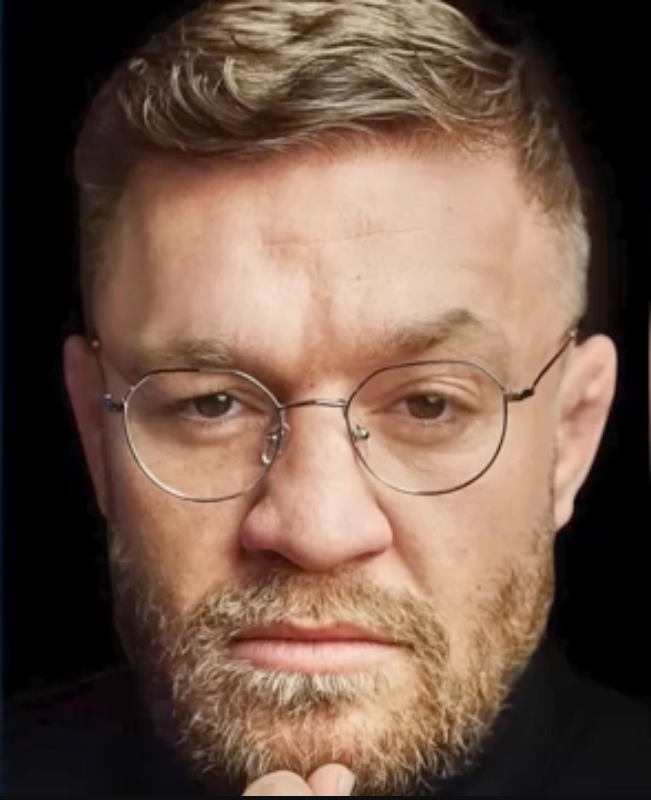
What was another reason why this may have occurred?
Another reason this happened was that the punch size used for FUE sometimes needed to be bigger. The intention was good; the surgeon wanted to minimise the size of the scars. So, you had to use a smaller punch to have smaller scars. But as your punch size got too small, you partially transected your grafts. So, instead of catching those three and four hair grafts, you only captured a single or maybe a double out of that, and the rest got transected because your punch size was too small.
Issues with the FUE Technique in Hair Transplants

Regarding aspects of his hair transplant that could improve, we had the appearance of the hairline that looked too straight across. In natural hairlines, especially as we reached our mid-30s and beyond, the hairline tended to curvature slightly as you reached the sides. If you made it perfectly straight, it would look artificial. Also, the hairline was brought down quite low. As I said earlier in the video, his facial proportions were great. So now they’d lowered that hairline, including centrally. So now it looked like the top third was a bit short. The transplanted area also needed more density. And we’d spoken about why that might be with the possible partial transection or the overuse of single hair grafts. And, of course, the potential for progressive thinning may have occurred as DHT-sensitive hair was transplanted.
Unnatural Appearance of Hair Direction in the Temple Area
If you looked at his temples, the hair direction and angulation appeared unnatural because the hairs were not flat enough. To do that, when I operated, I made sure that the head was quite flat, and then I was right there over the patient, creating the sides. I preferred using very fine blades with a fine blade handle that allowed my hand to get quite flat to recreate that type of angle when it came to temple work. It was very important, or else it was a dead giveaway that a hair transplant was done. And I always cautioned men who wanted to lower their central hairline, and we had an entire analysis about that.
Importance of Medical Therapy and Additional Procedures
Therefore, this was very important, especially if you would go with a lower hairline to be on medical therapy. And again, to learn more about medical therapies like minoxidil and finasteride. And if the hairline was lowered, it was important to tell patients that they’d often need to come back for an additional procedure to increase the density. It was very common when working into bare areas, like lowering hairlines into the bare scalp, that you weren’t going to create the density of the original hair. It was impossible to recreate the original density with bare areas. Thus, you would build up the density with a single surgery and then come back in to bolster that density even more.
